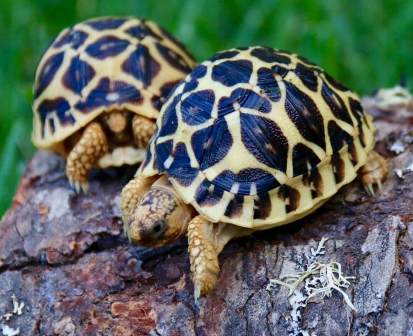Wildlife Sanctuary












Wildlife Sanctuary
It is also known as a wildlife refuge, is generally an officially designated territory, created by the government, providing protection and suitable living conditions for wild animals. Hunting, killing or capturing of animals is strictly prohibited in such areas. E.g. Jayakwadi Bird Sanctuary in Aurangabad and Ahmedabad, presence of Nathsagar lake makes the surrounding rich in aquatic flora(refers to all plant life occurring in an area or time period) and fauna( is all of the animal life of any particular region or time)
For the conservation of biodiversity different projects have been conducted by India as well as different international organisations. One of them is project tiger.
Project Tiger is an Indian success story of how tigers were saved from extinction by the efforts of the government of India and various International organisation.Project Tiger was launched in 1973 and various tiger reserves were created all over the country. With the launch of project tiger in 1973, various tiger reserves were created in different part of the country on a 'core-buffer' strategy. Under this strategy, the core areas were freed from all human activities and the buffer areas were to have 'conservation oriented land use'. Initially 9- tigers reserves were established in different states during the period 1973-74. Project tiger is implemented to ensure a viable population of tiger in India for scientific, economic, aesthetic, cultural and ecological values and to preserve natural heritage for all time, areas of biological importance as a natural heritage for the benefit, education and enjoyment of the people
| Name of the Sanctuary | Organisms for which they are known | Images |
|
Dachigam Sanctuary (J&K) |
Kashmir Stag (Hangul) |
Kashmir Stag |
| Bharatpur Bird Santuary (Rajasthan) |
Siberian crane, egrets herons (Famous for aquatic birds) |
Siberian Crane |
| Rann of kutch Sanctuary | Wild ass, the flamingo, the star tortoise and the desert fox |
|
|
Gir Santuary (Gujarat) |
Asiatic lion, chital,Sambhar and neelgai |
NEELGAI |
|
Bandipur Santuary (Karanataka) |
Indian elephant |
Indian Elephant |
|
Madumalai Sanctuary (Tamilnadu) |
Indian elephant |
Indian Elephant |
| Sanctuaries in Annamalai region (Tamil nadu) | Elephant, tiger, panther,gaur etc |
Tiger |
Difference between Wildlife sanctuary and Biosphere reserve
| Widlife sanctuary | Biosphere reserve |
| It is an area with in which animals are protected from possible dangers such as hunting. Their habitat is also conserved in this area. | It is a large are constructed for the conservation of biodiversity. |
| It provides protection and suitable living conditions to wild animals. | It helps in the conservation of various life forms such as plants animals and micro organisms. |
| An example of wild life sanctuary is Pachmarhi sanctuary. | An example of biosphere reserve is Pachmarhi biosphere reserve. |
One of endangered species of Indian medicinal plants is that of ________________ | |||
| Right Option : D | |||
| View Explanation | |||
Dudhawa National park is located in _________________ | |||
| Right Option : A | |||
| View Explanation | |||
Identify the odd combination of the habitat and the particular animal concerned. | |||
| Right Option : D | |||
| View Explanation | |||
Students / Parents Reviews [20]
In terms of methodology I want to say that institute provides expert guidence and results oriented monitering supplements by requsite study material along with regular tests which help the students to improve their education skills.The techniques of providing education helps the students to asses...

Aman Kumar Shrivastava
10thUsually we see institutes offering objective based learning which usually causes a lag behind in subjective examinations which is the pattern followed by schools. I think it is really a work of planning to make us students grab the advantages of modes of examination, Objective Subjective and Onli...

Anika Saxena
8thIt was a good experience with Abhyas Academy. I even faced problems in starting but slowly and steadily overcomed. Especially reasoning classes helped me a lot.

Cheshta
10thThird consective year,my ward is in Abhyas with nice experience of admin and transport support.Educational standard of the institute recumbent at satisfactory level. One thing would live to bring in notice that last year study books was distributed after half of the session was over,though study ...

Ayan Ghosh
8thWe started with lot of hope that Abhyas will help in better understnding of complex topics of highers classes. we are not disappointed with the progress our child has made after attending Abhyas. Though need to mention that we expected a lot more. On a scale of 1-10, we would give may be 7.

Manya
8thAbout Abhyas metholodology the teachers are very nice and hardworking toward students.The Centre Head Mrs Anu Sethi is also a brilliant teacher.Abhyas has taught me how to overcome problems and has always taken my doubts and suppoeted me.

Shreya Shrivastava
8thAbhyas is a complete education Institute. Here extreme care is taken by teacher with the help of regular exam. Extra classes also conducted by the institute, if the student is weak.

Om Umang
10thIt has a great methodology. Students here can get analysis to their test quickly.We can learn easily through PPTs and the testing methods are good. We know that where we have to practice

Barkha Arora
10thThe experience was nice. I studied here for three years and saw a tremendous change in myself. I started liking subjects like English and SST which earlier I ran from. Extra knowledge gave me confidence to overcome competitive exams. One of the best institutes for secondary education.

Aman Kumar Shrivastava
10thAbhyas academy is great place to learn. I have learnt a lot here they have finished my fear of not answering.It has created a habit of self studying in me.The teachers here are very supportive and helpful. Earlier my maths and science was good but now it has been much better than before.

Barkha Arora
10thMy experience with Abhyas academy is very good. I did not think that my every subject coming here will be so strong. The main thing is that the online tests had made me learn here more things.

Hiya Gupta
8thAbhyas Methodology is very good. It is based on according to student and each child manages accordingly to its properly. Methodology has improved the abilities of students to shine them in future.

Manish Kumar
10thIt was good as the experience because as we had come here we had been improved in a such envirnment created here.Extra is taught which is beneficial for future.

Eshan Arora
8thAbhyas is an institute of high repute. Yogansh has taken admission last year. It creates abilities in child to prepare for competitive exams. Students are motivated by living prizes on basis of performance in Abhyas exams. He is satisfied with institute.

Yogansh Nyasi
7thMy experience with Abhyas academy is very nice or it can be said wonderful. I have been studying here from seven class. I have been completing my journey of three years. I am tinking that I should join Abhyas Academy in tenth class as I am seeing much improvement in Maths and English

Hridey Preet
9thAbhyas is good institution and a innovative institute also. It is a good platform of beginners.Due to Abhyas,he has got knoweledge about reasoning and confidence.My son has improved his vocabulary because of Abhyas.Teacher have very friendly atmosphere also.

Manish Kumar
10thAbhyas institute is one of the best coaching institute in the vicinity of Ambala cantt.The institute provides good and quality education to the students.The teachers are well experienced and are very helpful in solving the problems. The major advantages of the institute is extra classes for weak...

Shreya Shrivastava
8thWhen I have not joined Abhyas Academy, my skills of solving maths problems were not clear. But, after joining it, my skills have been developed and my concepts of science and SST are very well. I also came to know about other subjects such as vedic maths and reasoning.

Sharandeep Singh
7thMy experience was very good with Abhyas academy. I am studying here from 6th class and I am satisfied by its results in my life. I improved a lot here ahead of school syllabus.

Ayan Ghosh
8thBeing a parent, I saw my daughter improvement in her studies by seeing a good result in all day to day compititive exam TMO, NSO, IEO etc and as well as studies. I have got a fruitful result from my daughter.

.jpg)

 Star tortoise
Star tortoise
.jpg)
